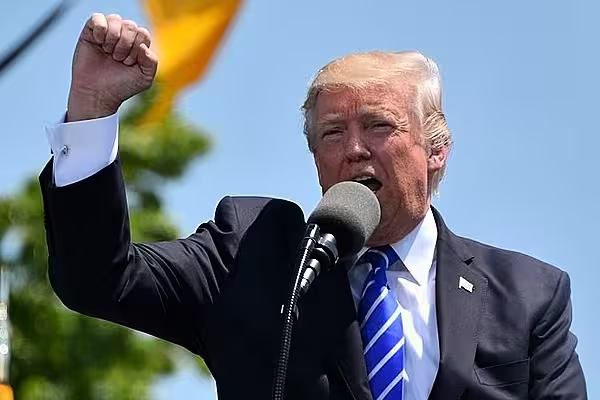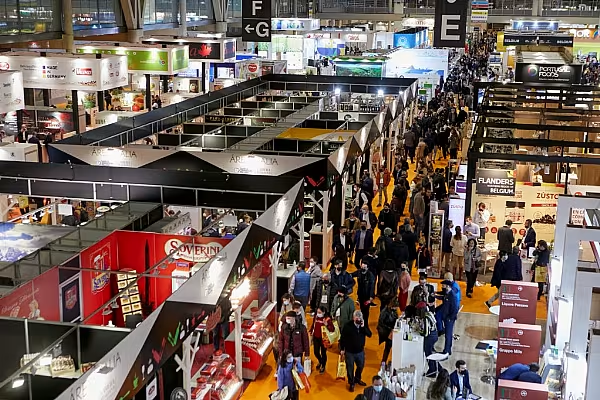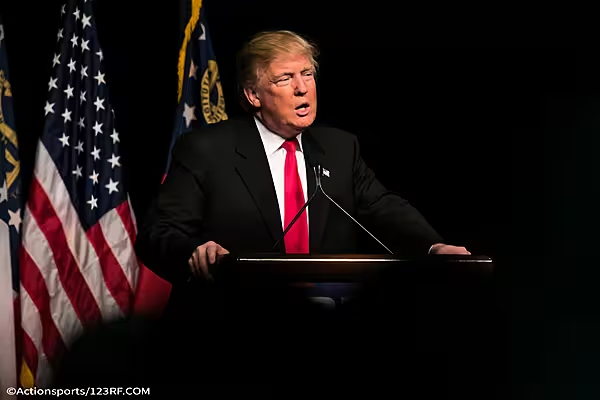The global economy is starting to show signs of strain from the 'America First' push of US President Donald Trump, who will hear renewed pleas to step back from a broader trade war when he visits Europe in the coming week.
Against a crescendo of measures and counter-measures, and threats of more to come, caution about investment is growing among employers in many countries around the world, including in the United States.
At the same time, central bankers on both sides of the Atlantic are sounding nervous about the risk of an escalation of the tensions.
Protectionist Policies
Trump has vowed to stick to his promises of protection for US industries against what he says is unfair competition from China, the European Union and beyond, even if many analysts say his punitive tariffs are likely to backfire on the US economy.
Ripping up the play-book for global trade of recent decades, he hit metal imports with tariffs in June and has threatened to curb car imports from Europe with a 20% duty.
On Friday, Washington implemented tariffs of 25% on $34 billion of Chinese imports, part of a total $500 billion of goods from China that could be targeted for US duties. Beijing swiftly retaliated in kind.
"The world has to be prepared for an escalation of the trade conflict in the months to come," Raoul Leering, a trade analyst at ING bank said in a note to clients.
"For now, Trump's voters back his stance on trade, suggesting he's unlikely to back down, particularly ahead of the mid-term elections, where the Republicans will be fighting to hold on to a majority in the Senate."
However, after the elections in November it was possible that the economic costs of Trump's approach would be clearer and prompt a rethink, Leering said.
But trying to predict the White House's next moves has proven unwise.
Foreign capitals initially hoped that Trump, who basks in his reputation as a dealmaker, was merely talking tough on trade in order to win a few concessions from other countries.
But the talk is turning into real barriers to trade.
Rhetoric Meets Reality?
The US Federal Reserve said on Thursday it saw signs that worries among companies about trade were curbing investment, a cloud over the otherwise strong US economy.
On the same day, Bank of England Governor Mark Carney warned that uncertainty about trade could cause market interest rates to snap higher around the world.
That would further complicate the challenge for many economies, especially developing ones, which are already trying to cope with the impact of rising US interest rates.
"At the moment, protectionism is largely just talk, and tweets," Carney said. "But what if rhetoric becomes reality?"
Even though the measures and counter-measures announced so far by the United States, the EU and China -- plus Mexico and Canada as America's NAFTA trade deal partners -- would double bilateral tariffs and take US duties to their highest levels in 50 years, their impact was unlikely to be major, Carney said.
But at least 1% of global economic output -- and 2.5% of America's -- could be lost if the United States raised its tariffs by 10 percentage points against all its trading partners, a hit which would be amplified if other countries followed suit, Carney said.
The World Trade Organisation says the trade spat has already hurt forward-looking indicators, and business surveys showed a hit to manufacturing in Europe and Asia in June, with German factory growth at an 18-month low.
NATO Leaders Summit
Trump kicks off his visit to Europe at a summit of leaders of NATO countries in Brussels on Wednesday and Thursday where he is expected to hammer home his calls on other countries to spend more on defence.
While not on the summit's official agenda, European leaders will voice their trade concerns to Trump, diplomats said.
Trump is then due to visit Britain where he will meet Prime Minister Theresa May -- as well as Queen Elizabeth -- before flying to Helsinki to meet Russian President Vladimir Putin.
In June, the British leader warned both Trump and EU leaders of the dangers of entering a tit-for-tat trade war.
She must tread a fine line when she hosts Trump, given the importance her government has placed on getting a trade deal with the United States after Britain leaves the EU.
Other European leaders are likely to be less inhibited when they meet Trump in Brussels, given the scale of alarm at the prospect of an isolationist America.
"There are no winners in a trade war, and the trend is pointing in the wrong direction," Steen Jakobsen, chief economist at Saxo Bank, said.
"The US, of course, is now actively breaking down the very international organisations that have supported growth and globalisation since the end of World War II and after the fall of the Berlin Wall."
News by Reuters, edited by ESM. Click subscribe to sign up to ESM: European Supermarket Magazine.














